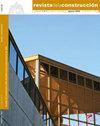钢筋混凝土建筑物的性能评价与加固
IF 1.4
4区 工程技术
引用次数: 2
摘要
鉴于过去的地震,有人指出,世界上有几个结构位于地震活跃带。因此,采用各种加固方法提高既有建筑的抗震性能水平一直是结构工程研究的热点。几种抗震规范中定义的非线性分析程序在现有建筑物的抗震性能评估中显示出可靠的结果。在本研究中,根据土耳其建筑抗震规范-2018和美国标准ASCE,对具有共同平面图,结构构件的材料和截面特性的三层,五层和八层既有和钢筋混凝土建筑的抗震性能进行了研究。为了得到钢筋混凝土建筑物的抗震性能结果,得到了建筑物的位移需求,并将其用于非线性分析。解决方案采用SAP2000结构分析软件。确定的加固技术是通过在现有钢筋混凝土建筑和确定柱的护套上增加同心钢支撑构件来提供的。将非线性分析应用于既有建筑和加固建筑,确定了结构构件的损伤情况,根据两种规范对建筑的抗震性能进行了评估,并对结果进行了解释。本文章由计算机程序翻译,如有差异,请以英文原文为准。
Performance evaluation and strengthening of reinforced concrete buildings
In view of the past earthquakes, it is stated that several structures are located in active seismic zones around the world. So, improvement of the earthquake performance levels of the existing buildings by using various strengthening methods has been the major interest in structural engineering. Non-linear analysis procedures that are defined in several seismic codes exhibit reliable results in the evaluation of seismic performances of existing buildings. In this study, seismic performances of three, five and eight storey existing and strengthened reinforced concrete buildings having the common floor plan, material and section properties of the structural members are investigated according to Turkish Building Earthquake Code-2018 and American Standard, ASCE. To obtain the earthquake performance results of reinforced concrete buildings, displacement demands of the buildings have been obtained and utilized in nonlinear analyses. SAP2000 structural analysis software is used in the solutions. The determined strengthening techniques are provided by adding concentric steel bracing members to existing reinforced concrete buildings and jacketing of the determined columns. As a result of non-linear analyses applied to the existing and strengthened buildings, damage situations of the structural members are determined, seismic performances of the buildings are evaluated according to both codes and the results are interpreted in the end.
求助全文
通过发布文献求助,成功后即可免费获取论文全文。
去求助
来源期刊

Revista de la Construccion
工程技术-工程:土木
CiteScore
2.30
自引率
21.40%
发文量
0
期刊介绍:
The Journal of Construction is aimed at professionals, constructors, academics, researchers, companies, architects, engineers, and anyone who wishes to expand and update their knowledge about construction. We therefore invite all researchers, academics, and professionals to send their contributions for assessment and possible publication in this journal. The publications are free of publication charges.
OBJECTIVES
The objectives of the Journal of Construction are:
1. To disseminate new knowledge in all areas related to construction (Building, Civil Works, Materials, Business, Education, etc.).
2. To provide professionals in the area with material for discussion to refresh and update their knowledge.
3. To disseminate new applied technologies in construction nationally and internationally.
4. To provide national and foreign academics with an internationally endorsed medium in which to share their knowledge and debate the topics raised.
 求助内容:
求助内容: 应助结果提醒方式:
应助结果提醒方式:


